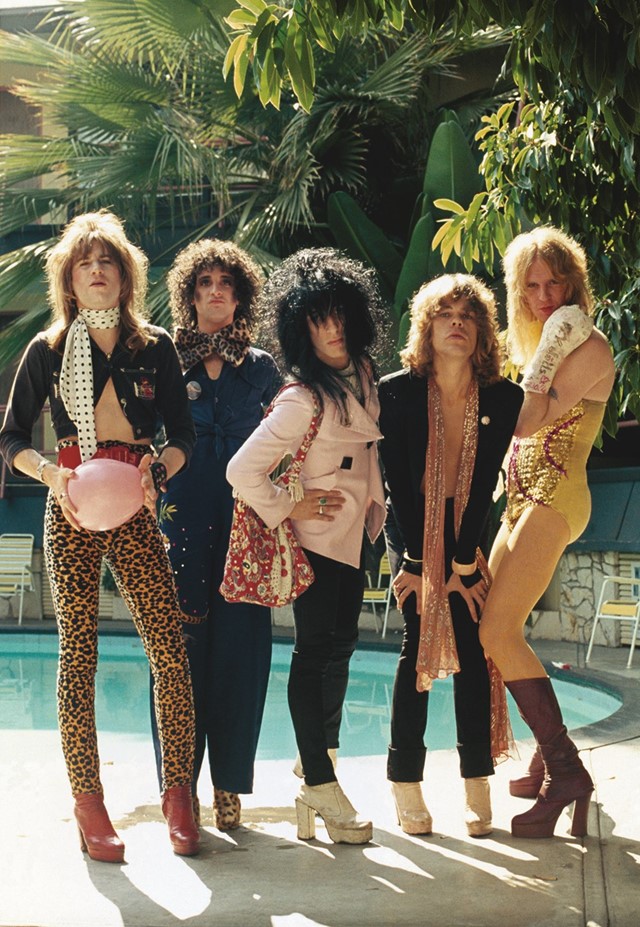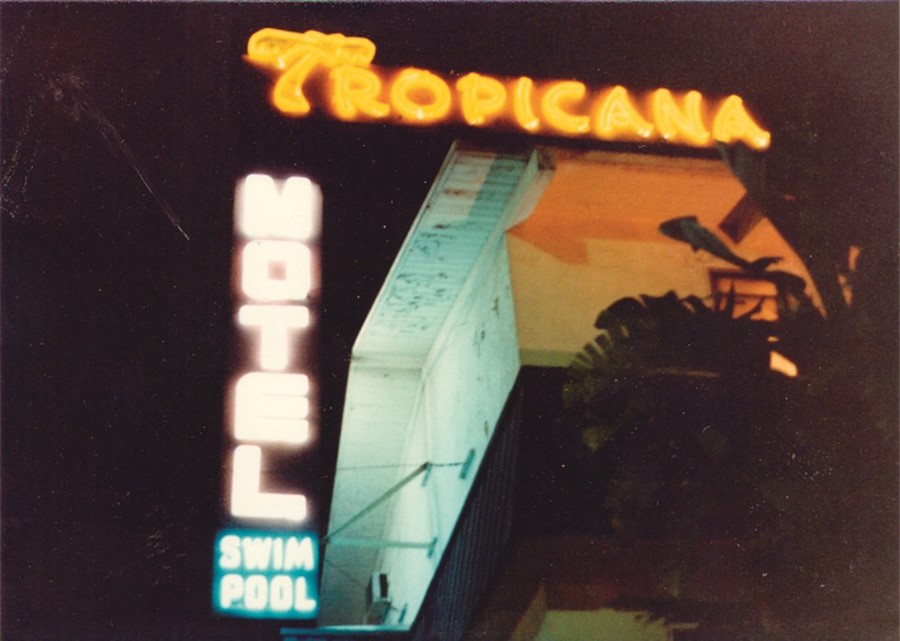The New York Dolls, The Stooges and The Ramones got wasted there. Jim Morrison and Tom Waits called it home. The Tropicana Motel might have checked out 30 years ago, but the stories live on
Just south of the Strip and stumbling distance from the Troubadour, the Tropicana Motel was the palm-trees-and-Astroturf answer to New York’s Chelsea Hotel. The flophouse of choice for hookers, pimps, groupies, runaways, drug dealers and assorted burnouts, the horseshoe-shaped motor lodge was also the favoured dive of some of the biggest names in rock’n’roll history; what the Tropicana lacked in clean towels and functioning plumbing, it made up for with cheap weekly rates, swift access to drugs, and extreme tolerance for debauched behaviour. “Under the Trop’s jungle-like foliage there were orgies, murders, suicides, ODs, love triangles, marriages and drunken brawls on a daily basis,” wrote underworld LA chronicler Iris Berry in her book Tales from the Tropicana Motel.
Built in the late 40s, “the Trop” was bought by Sandy Koufax, star pitcher for the LA Dodgers, in 1962. Originally a stopover for travelling salesmen from the mid-west, its proximity to the Strip soon attracted West Hollywood’s seamier underbelly. Advertising “74 luxurious air-conditioned rooms” at “popular prices”, by the late 60s luxuries were few: in the lobby, a vending machine dispensed ice-cold soda and toenail clippers, while the rooms offered flimsy fly screens, television sets with coathanger-aerials and shag carpeting with dubious-looking stains. Struggling musicians who couldn’t stretch to the $9 a night rooms could live in their cars in the back parking lot with the tacit permission of management. William Burroughs summed up its noirish, sunshine-and-hangover charms in Rolling Stone magazine: “There is a kidney shaped swimming pool in the courtyard,” he wrote. “On the patio are rusty metal tables, deck chairs, palms and banana trees: a rundown Raymond Chandler set from the 1950s. One expects to find a dead man floating in the pool one morning.”
If not a corpse, a morning dip risked an encounter with submerged lawn furniture, used syringes or a long-term resident who swam laps with his pet snake. But mornings weren’t the Trop’s strong point anyway; lodgers slept most of the day, blearily emerging in late afternoon to file into Duke’s, the motel’s onsite diner and hangout which served generous plates of burgers, omelettes and Monte Cristo’s to its bedraggled clientele. On any given day, the New York Dolls, Frank Zappa, Janis Joplin, the Mamas and the Papas, Led Zeppelin, Blondie, Sly Stone or the Ramones could be spotted hunkered around one of its cigarette-burned Formica tables.
When Iggy Pop flew to LA for the first time on his 23rd birthday, in 1970, he and fellow Stooges headed straight for the motel on 8585 Santa Monica Blvd and found assorted Manson followers, as well as Andy Warhol and his entourage already checked in. While the Stooges recorded Fun House around the corner at Elektra studios, Warhol’s Factory film crew were shooting scenes for Trash with Joe Dallesandro – they returned two years later for the follow-up Heat, which was almost entirely set around its pool.

While the motel was mostly a haven for transient touring bands, some musicians went so far as to call it home – Jim Morrison rented a room for three years. The Lizard King favoured lesbian bar The Palms directly across the street, and the Doors’ 1971 album LA Woman – Morrison’s last – was recorded opposite at their Workshop studio. But it was Tom Waits who really fell for the Tropicana. The barfly bard spent four bourbon-soaked years from 1975 to 1979 in a two-room bungalow around the back. Inside, a narrow path lead between piles of records and empty bottles to a tiny kitchenette in which he’d installed a piano, after sawing off the draining board. “You could imagine you were living like the Orwell book, Down and Out in Paris and London,” he said. “You could imagine that you were in some place that’s constantly sweating and heaving and offering up ideas.”
Loren Pickford, one-time Tropicana employee remembers a typical evening around that period: “I was doing the night audit, and in came Tom. ‘I want to watch Spartacus on TV,’ he said. About that time a girl walked in. I didn’t think she was a prostitute, so I rented her a room. Two minutes later her pimp pulls a gun on Nick Lowe from Rockpile. I’m calling the sheriff, and I got Tom Waits on the floor, rocking back and forth with a bottle of Cognac. Right then, four gay Filipinos came in. I gave them the room next to the office, and not 15 minutes later they’re having an orgy in there, banging on the walls. Meantime the sheriff pulled up, and there’s a big confrontation in Nick Lowe’s room. At that point a Mexican guy pulled in with his six kids in an old car. While they’re in the office, his car caught on fire. Went up like a torch. He starts crying. The four guys are still banging on the wall. The cops are arresting the pimp. And, lastly, I got Tom Waits yelling, ‘I love the scene of Spartacus on the hill!’”
Eventually, even Waits drew the line at the Tropicana’s standards of hygiene, when management painted the swimming pool tiles black to avoid cleaning it at all. He moved out in 1979, but the Trop raged on for another eight years before it succumbed to the wrecking ball, replaced by the banal contours of a $20m Ramada Inn.
This article appears in the Spring/Summer 2016 edition of Another Man.
